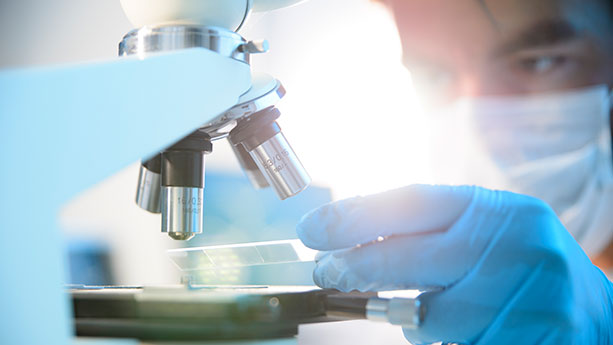Lung cancer is the second most common cancer (PDF) in the U.S. and the leading cause of death by cancer. The earlier the disease is found, the better your odds of a complete recovery.

Featured Services
Intercepting Lung Cancer
Lung Nodule and Cancer Screening Program
Lung nodules detected on a screening aren’t usually cancerous, but it’s important to monitor them. Our multidisciplinary Lung Nodule Program team:
- Quickly analyzes lung nodules.
- Creates a personalized follow-up plan based on your risk factors and family history.
- Timely referrals to medical and surgical specialist for advanced individualized diagnostic and treatment plans.
Screening
Numerous Sutter locations use noninvasive, low-dose CT scan or X-ray to detect lung nodules. Ask your healthcare provider about getting an annual lung cancer screening if you fit all these criteria:
- Age 50 to 80, and
- Current smoker or quit in the past 15 years, and
- Smoked a pack a day for 20 years or two packs a day for 10 years..
Diagnosis Imaging
If cancer is confirmed, further imaging may include:
- Chest CT or PET scan.
- Endobronchial ultrasound (EBUS) to assess cancer spread.
- Bronchoscopy or barium swallow, an X-ray procedure to highlight any abnormalities
Biopsy
To get a view inside or remove cells for study, doctors use a variety of minimally invasive methods, including:
- Robotic-assisted bronchoscopy biopsy, allowing the surgeon to see inside the lung and precisely guide a needle to collect tissue.
- Bronchial or esophageal endoscopic ultrasound.
- CT Guided Biopsy
Treatment Surgery
Thoracic surgeons use state-of-the-art procedures for partial or total lung removal. Techniques include:
- Assisted Single Anesthetic Program (ASAP), a robotic-assisted procedure to diagnose and remove a lung cancer during one surgery. The single protocol takes only three to four hours on one day – in contrast to the traditional approach that takes weeks of separate appointments and procedures.
- Thoracic radiosurgery.
- Sugarbaker procedure for peritoneal mesothelioma.
- Minimally invasive esophageal surgery, including removal (esophagectomy).
- Video-assisted thoracoscopic (VAT) robotic surgery.
Doctors may treat tumors within the airway using:
- Laser therapy.
- Spray cryotherapy (cold).
Additional lung and chest services include:
- New treatments developed by thoracic medical oncologists.
- Consultation and second-opinion reviews by thoracic surgical pathology specialists.
- Smoking cessation classes.
- Integrative care team and oncology certified nurse (OCN®) navigators to guide you through every step and improve your quality of life through the cancer journey.
- Access to clinical trials.
Clinical Perspectives
A Cure for Every Cancer
Cancer is a mighty foe, well deserving of the federal government’s latest strategic move to neutralize the disease—the Precision Medicine Initiative. Hundreds of millions of dollars in funding will flow to the National Institutes of Health and the National Cancer Institute to research the genetic makeup of cancer cells and match treatments to individual patients.
Cancer Research
Doctors at Sutter Davis Hospital












